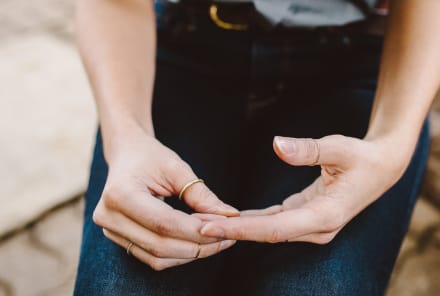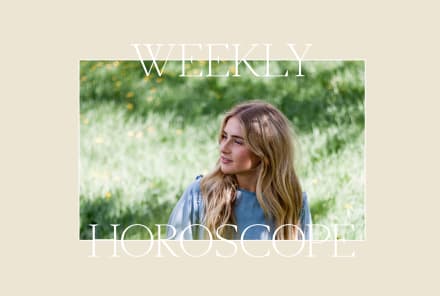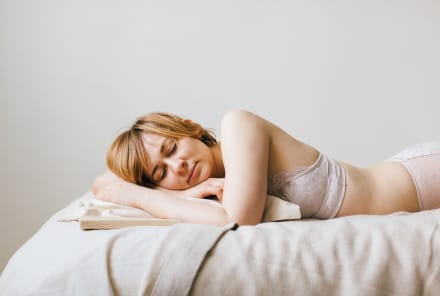Advertisement
What It's Really Like To Have Candida


A few years ago, I was prescribed Doxycycline after a bout with Lyme Disease that left me unable to move my neck or bend my legs.
Six months later, during my senior spring semester of college, I was still on the Doxy — though I wasn't sure if I'd actually cured the Lyme Disease. I could bend my legs. My neck seemed OK. But I still felt tired and foggy. My stomach felt off, but that's often a side-effect of antibiotics. Above all, I was afraid of the Lyme still being in my system, and so my doctor and I agreed that I’d continue on the antibiotics for one more month.
For the most part, I felt better, but had some new symptoms. Most notably, my skin itched all over. It was as if bugs were crawling all over me — my arms, my legs, my scalp, my armpits, between my toes, and even my face, which was also breaking out in unprecedented ways.
It’s anxiety about graduating from college, I rationalized, grateful for my years of therapy. So I made a commitment to moisturize, and be more mindful about applying my acne medication.
But the acne persisted, as did the itching. On some nights, the sensation was so acute, that I was kept up scratching myself all over. Worst of all, there was no sign of inflammation anywhere except my face. I felt helpless and embarrassed to tell anyone, sure that this was all in my head.
So I did what any person in my position would do: I Googled my symptoms online, including everything from “Lyme” to “prolonged antibiotics” to “itching” and “cystic acne.” Surprisingly, I was met with consistent findings: something about a condition called candida.
WWhat I learned from Google searching was that candida albicans is a genus of yeast and it typically lives amidst our gut flora in the mouth and intestines.
It always felt embarrassing and incredibly effortful to explain candida to friends: I’d go into the details of my medical history, and bring up “yeast,” which most people associate with vaginal infections. Not a sexy topic when trying to make plans.
But when the good bacteria in our systems is knocked out (by antibiotics, for instance), candida could potentially can start to get out of control. One theory is that as the candida population grows in the body, it weakens the walls of the intestines and goes into the bloodstream, causing a whole host of systems ranging from poor digestion, to joint pain, to anxiety and depression, to weight gain — and, yes, itching all over. (This is called leaky gut).
I called my doctor, Leo Galland the next day. He's an MD who specializes in functional medicine (i.e. looking at the body as a whole), and he told me that my self-diagnosis made sense: prolonged use of strong antibiotics such as Doxycycline can cause candida overgrowth. (I recently asked him why so few doctors take candida seriously, and he said, “There are numerous scientific studies on candida allergy, but most doctors never learn about them.”)
I was taken off the Doxy and given a rigorous regimen of probiotics and antifungal supplements such as coconut oil, grapefruit seed extract and oregano oil. I was also encouraged to follow “the candida diet.”
You’re probably wondering what this diet is exactly. It’s quite simple. In fact, its simplicity is what makes it so hard to follow. In order to kill the overgrowth of candida in your body, you need to starve the yeast by depriving it of carbohydrates. Think about how yeast works when you make bread: it basically feeds off of the flour (which turns into sugar), and causes the bread to rise.
On the candida diet, I had to give up sugar in all its forms (no honey or maple syrup), alcohol, grains, dairy, high sugar vegetables such as carrots and sweet potatoes, fruit, filtered vinegars, soy sauce and other condiments.
On a typical day, I’d eat a green smoothie for breakfast (with avocado) or chia pudding with homemade almond milk. (I became deathly afraid of additives in the packaged stuff.) For lunch, some greens and a hunk of protein, usually chicken or fish. For dinner, the same. No sauces. No fruit. No nothing — or at least that’s what it felt like.
I tried as best I could to follow the diet, but it was virtually impossible for me to do so while finishing up my senior year of college. Every other weekend was some kind of celebration, with pizza, snacks and beer. The last thing I wanted to do was alienate myself and have to explain the intricacies of my situation.
So I tried the best I could, realizing that my itching would be better on some days and worse on others, depending on the degree of my “cheating” on the candida diet protocol. If I had a beer, the itching would come back for a couple days until I’d return to the diet. If I ate something sweet and had a beer, the itching would either last longer or feel more acute. I felt imprisoned by what seemed like a lose-lose situation: I’d either have to abstain from celebrating and feel physically OK, or have fun and then suffer the consequences.
It was not until after I graduated, in the summer of 2013, that I really put myself on a strict program. I followed the diet for three months with the aim of killing the overgrown yeast, healing my gut permeability, and getting myself feeling back to normal.
After about a month on the strict diet, my skin stopped itching and my acne cleared up. But on the few occasions when I let myself slip and had some salad dressing with vinegar in it, I'd find myself beginning to itch slightly.
I buckled down, followed the protocol for three months, and then was finally able to slowly introduce formerly-forbidden foods without feeling like I had to “pay the price.” Why? Put simply by Dr. Galland: “Sugar increases growth and metabolic activity of yeast.” And so without the sugar, the yeast stopped growing in overdrive, and my body returned to normalcy.
To be honest, the diet was hard, and not just because I had to deprive myself of delicious, sugary and carb-rich foods. It was hard because it was isolating. It made it virtually impossible to eat in restaurants, to meet friends for a quick bite or drink after work. I had to cook all of my own meals and developed a pretty neurotic awareness of the things I put in my body.
And if I were to try to explain the situation to someone, it always felt somewhat embarrassing and incredibly effortful: I’d go into the details of my medical history, and bring up “yeast,” which most people associate with vaginal infections. Not a sexy topic when trying to make plans with friends. It felt easier to retreat into my routine. I became so obsessed with the diet, that I started to view all foods in terms of being “toxic” or not. Whether or not I’ll call that "anorexia" remains a question for me, but my rigidity became a problem, and one that took a while to figure out, even after the candida symptoms subsided.
Now, a few years later, I am not fully done with the candida. I realized this a few weeks ago, in fact, when I was prescribed Cipro for a minor infection. After the five days of antibiotics were done, I noticed the itching. It was the first time I had been on antibiotics since the Lyme debacle. The reemergence of the itching felt immediately traumatizing. Before taking a minute to think of practical next steps, I felt myself slipping back into a place of disempowerment, fear of social isolation, and impending doom about the diet hell that I’d have to endure.
But I’m actually in a new place. Most importantly, I simply don’t have it in me emotionally to deal with “food prison” as Dr. Galland called it. I’ve come to realize that, at least for now, candida is a chronic issue that I have to work with, and not against. As a result, I am now eating a low-sugar, low-carb diet, and trying to follow the “rules” as best I can.
But if I slip, and I begin to itch, I realize that I have the power to start again. If I have a splash of vinegar, I’m not going to die. I'm probably not even going to have a flare-up. (That would take multiple splashes, probably.) I have learned to communicate my needs to myself, and to others, in a way that feels nurturing, rather than punishing.
I no longer feel intense pressure to explain my food choices to friends, and if they ask, I say something like "Being on antibiotics for so long made me have some food sensitivities." I'm happy to share more but it's also less of a big deal now that I have reframed my internal approach to thinking about it. Dealing with candida has become its own funny, uncomfortable little exercise in mindfulness.
Watch Next
Enjoy some of our favorite clips from classes
Enjoy some of our favorite clips from classes
What Is Meditation?
Mindfulness/Spirituality | Light Watkins
Box Breathing
Mindfulness/Spirituality | Gwen Dittmar
What Breathwork Can Address
Mindfulness/Spirituality | Gwen Dittmar
The 8 Limbs of Yoga - What is Asana?
Yoga | Caley Alyssa
Two Standing Postures to Open Up Tight Hips
Yoga | Caley Alyssa
How Plants Can Optimize Athletic Performance
Nutrition | Rich Roll
What to Eat Before a Workout
Nutrition | Rich Roll
How Ayurveda Helps Us Navigate Modern Life
Nutrition | Sahara Rose
Messages About Love & Relationships
Love & Relationships | Esther Perel
Love Languages
Love & Relationships | Esther Perel

















